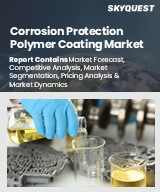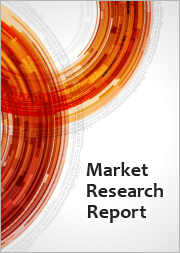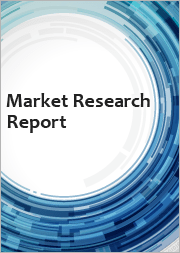
|
시장보고서
상품코드
1761696
세계의 고순도 이소부틸렌(HPIB) 시장 분석Global High Purity Isobutylene Market Study Analysis |
||||||
세계 고순도 이소부틸렌(HPIB) 시장 규모는 2024년 약 38억 달러로 평가되었고, 예측 기간 말까지 약 50억 달러에 달하고, 2025-2036년 연평균 2.4%의 성장률을 보일 것으로 예측됩니다. 부틸 고무는 여전히 가장 큰 응용 분야로 전 세계 HPIB 수요의 거의 절반을 차지합니다. 향후 합성고무, 특수화학 등 다운스트림 부문에 대한 투자로 시장은 안정적인 성장 궤도를 유지할 것으로 예측됩니다.
세계 HPIB 생산능력 전망
세계 HPIB 시장은 ExxonMobil,LyondellBasell Industries,Enterprise Products Partners,Repsol,Evonik,Lanxess,Yanshan Petrochemical,Kuraray, Songwon Corporation, Vinati Organics, Reliance, BASF, Sumitomo Chemical, Petro Rabigh 등 주요 화학업체들이 주도하고 있습니다. 이들 기업은 다양한 지역과 공정에서 활동하며 다양한 산업 부문에 공급을 보장하고 있습니다.
2024년 세계 고순도 이소부틸렌(HPIB) 생산능력은 약 4,500 킬로톤이었습니다. 이는 고무, 접착제, 특수 폴리머 등의 산업 수요 증가로 인해 2036년까지 6,000 킬로톤을 넘어설 것으로 예측됩니다. 아시아태평양이 2,000 킬로톤 이상의 설비 용량으로 가장 큰 점유율을 차지했으며, 북미와 유럽이 그 뒤를 이었습니다. 이 세 지역을 합치면 전 세계 생산능력의 약 88%를 차지합니다.
예측 기간 동안 중국, 인도, 한국 및 기타 동남아시아 국가를 중심으로 아시아태평양에서 약 1,000 킬로톤의 신규 생산능력이 추가될 것으로 예측됩니다. 북미와 서유럽은 HPIB의 순수출국으로서 각각 연평균 30kg, 15kg의 순수출이 예상됩니다. 이들 지역에서는 2036년까지 대규모 생산능력 증설이 계획되어 있지 않습니다.
지역 수요 분석
아시아태평양, 북미, 서유럽은 전 세계 고순도 이소부틸렌(HPIB) 소비량의 95% 이상을 차지합니다. 중국이 주도하는 아시아태평양은 세계 시장의 약 51%를 차지하는 최대 소비국입니다. 이 지역은 연평균 3.0% 성장하여 2036년까지 40억 달러에 달할 것으로 예측됩니다. 중동 유럽, 라틴아메리카, 중동 및 아프리카를 포함한 기타 지역은 수요의 나머지 5%를 차지합니다.
수요 : 용도별
고순도 이소부틸렌(HPIB)의 주요 용도는 부틸 고무 생산으로 전체 수요의 50% 이상을 차지합니다. 다른 주요 용도는 고순도 폴리이소부틸렌(PIB)과 메틸 메타크릴레이트(MMA)로, 이 두 가지를 합치면 전체 시장의 35% 이상을 차지합니다. 나머지 수요는 첨가제, 산화방지제 등 다양한 용도로 사용됩니다.
예측 기간 동안 부틸 고무와 고순도 PIB는 자동차, 건설 및 기타 산업 부문 수요 증가에 힘입어 가장 빠르게 성장할 것으로 예측됩니다. 이러한 다운스트림 산업에 대한 투자도 HPIB 소비를 증가시킬 것으로 예측됩니다.
시장 역학
성장 촉진요인 : 자동차 및 의료 분야의 부틸 고무 수요 증가
자동차 타이어 및 의료용 부틸 고무 수요 증가는 고순도 이소부틸렌(HPIB) 시장의 중요한 촉진제이며, HPIB는 우수한 불투과성과 안정성으로 인해 부틸 고무 생산에 없어서는 안 될 원료입니다. 자동차 생산량 증가, 타이어 교체 주기 증가, 의약품의 마개 및 보호 장비에 합성고무의 사용으로 인해 고품질 HPIB에 대한 수요가 급증하고 있습니다. 전기자동차로의 전환과 의료 인프라의 발전은 수요를 더욱 촉진하고 있습니다. 이러한 세계 트렌드가 HPIB 시장의 성장을 가속하고 있습니다.
억제요인: 높은 생산비용과 복잡한 제조 공정
고순도 이소부틸렌(HPIB) 시장의 주요 억제요인 중 하나는 높은 비용과 제조 공정의 복잡성이며, 특히 의약품 및 특수 화학제품에 사용되는 HPIB는 엄격한 품질 기준을 충족하는 첨단 정제 기술이 필요합니다. 이러한 방법은 막대한 에너지와 첨단 기술을 필요로 하기 때문에 설비 투자와 운영 비용이 많이 듭니다. 또한, 생산 및 운송 중 순도를 유지하는 것은 물류상의 문제이기도 합니다. 이러한 요인들은 신규 진입을 막고 공급 확대를 제한하여 전체 시장 성장에 영향을 미칠 수 있습니다.
세계의 고순도 이소부틸렌(HPIB) 시장에 대해 조사 분석했으며, 시장 역학 및 산업 동향, 각 부문별 수요, 제조업체 프로파일 등의 정보를 전해드립니다.
목차
제1장 서론
제2장 시장 요약
- 시장 발전
- 수급 개요
- 산업 구조
- 전략상 문제
- 최종 용도 동향
- 성장 예측
제3장 경제와 에너지 전망
- GDP와 인구통계
- 금융 정책과 재정 정책
- 원유 생산과 가격
- 천연가스
- 전기요금
제4장 최종 용도 부문 실적
- 자동차
- 산업
- 기타
제5장 플랜트와 프로젝트 분석
- 고순도 이소부틸렌(HPIB) 생산능력 : 기업별
- 고순도 이소부틸렌(HPIB) 생산능력 : 프로세스별
- MTBE 분쇄
- TBA 탈수
- 이소부탄 탈수소
- 저온 산분리
- 고순도 이소부틸렌(HPIB) 생산능력 : 국가/지역별
- 생산능력 개요
제6장 고순도 이소부틸렌(HPIB) 서론과 시장 개요
- 제품 설명
- 등급과 특성
- 원재료
- 제조 공정
- MTBE 분쇄
- TBA 탈수
- 이소부탄 탈수소
- 저온 산분리
- 환경 문제
- 밸류체인
- 용도
제7장 시장 역학과 산업 동향
- 시장 역학
- 성장 촉진요인
- 성장 억제요인
- 기회
- 과제
제8장 세계의 고순도 이소부틸렌(HPIB) 수급 분석 : 용도별(수량과 금액)(2018년-2034년)
- 전략상 문제
- 수급 분석과 예측(2018년-2034년)
- 생산능력
- 가동률
- 생산
- 순수출
- 수요
- 수요 성장률
- 성장 촉진요인 분석
- 세계의 고순도 이소부틸렌(HPIB) 시장 : 용도별
- 부틸 고무
- 고순도 폴리 이소부틸렌
- 메타크릴산메틸(MMA)
- 기타
제9장 수급 분석과 시장 리뷰 : 지역/국가별(수량과 금액)(2018년-2034년)
- 전략상 문제
- 생산능력
- 가동률
- 생산
- 순수출
- 수요
- 수요 성장률
- 고순도 이소부틸렌(HPIB) 시장 : 용도별
- 북미
- 미국
- 캐나다
- 멕시코
- 서유럽
- 독일
- 프랑스
- 이탈리아
- 영국
- 스페인
- 기타 서유럽
- 중유럽 및 동유럽
- 러시아
- 폴란드
- 튀르키예
- 기타 중유럽 및 동유럽
- 아시아태평양
- 중국
- 일본
- 인도
- 한국
- ASEAN
- 기타 아시아태평양
- 중남미
- 브라질
- 기타 중남미
- 중동 및 아프리카
- 사우디아라비아
- 남아프리카공화국
- 기타 중동 및 아프리카
제10장 가격 분석
- 고순도 이소부틸렌(HPIB) 평균 가격
- 고순도 이소부틸렌(HPIB) 평균 가격 : 국가별
- 고순도 이소부틸렌(HPIB) 평균 가격 : 지역별
- 가격 예측
제11장 주요 전략상 문제
제12장 기회 평가
- 시장의 매력 평가
- 전망과 타겟 시장 조사
제13장 전략적 추천과 제안
제14장 기업 분석과 시장 점유율 분석
- 고순도 이소부틸렌(HPIB) 제조업체 개요/기업 분석
- 기본 상세
- 본사 및 주요 시장
- 소유
- 기업 재무
- 제조거점
- 세계의 판매
- 총 직원수
- 제품 포트폴리오/서비스/솔루션
- 채택된 주요 사업 전략과 Prismane Consulting 개요
- 최근 발전
- 대상 기업
- ExxonMobil
- Lyondellbasell Industries
- Enterprise Products Partners
- Repsol(Polibutenos)
- Evonik
- Lanxess
- Yanshan PC
- Kuraray
- Songwon Corporation
- Vinati Organics
- Reliance
- BASF
- Sumitomo Chem.
- Petro Rabigh
- 기타 제조업체
제15장 부록
LSH 25.07.11The global market for High Purity Isobutylene (HPIB) was valued to be worth about USD 3.8 billion in 2024 and it is expected to expand at a CAGR of 2.4% from 2025 to 2036, reaching an estimated value of around USD 5.0 billion by the conclusion of the forecast period. Butyl Rubber continues to be the largest application area, accounting for nearly half of global HPIB demand. With upcoming investments in downstream sectors such as synthetic rubber and specialty chemicals, the market is expected to maintain a steady growth trajectory.
High Purity Isobutylene Production Processes
HPIB is mainly produced through four technologies: MTBE cracking, TBA dehydration, Isobutane dehydrogenation, and cold acid separation. As of 2024, there are over 75 production facilities worldwide. MTBE cracking is the most widely adopted method, contributing more than 50% of total capacity. It is followed by TBA dehydration, with the remaining 35% of capacity attributed to isobutane dehydrogenation and cold acid separation. Major producers using the TBA dehydration method include ExxonMobil, LyondellBasell Industries, BASF, and Songwon Corporation.
In China, the MTBE cracking method dominates, with key producers such as Cenway, Sinostart, CITIC Guoan, Ningbo Haode, Dongying Qifa, Shandong Yuhuang, and others. Plant capacities in the region range from 20 to 60 kilo tons per year.
Global HPIB Capacity Outlook
The global HPIB market is led by major chemical producers such as ExxonMobil, LyondellBasell Industries, Enterprise Products Partners, Repsol, Evonik, Lanxess, Yanshan Petrochemical, Kuraray, Songwon Corporation, Vinati Organics, Reliance, BASF, Sumitomo Chemical, and Petro Rabigh. These companies operate across various regions and processes, ensuring supply to diverse industrial segments.
In 2024, the global High Purity Isobutylene production capacity was around 4,500 kilo tons. This is expected to surpass 6,000 kilo tons by 2036, driven by increasing demand from industries such as rubber, adhesives, and specialty polymers. Asia Pacific holds the largest share, with over 2,000 kilo tons of installed capacity, followed by North America and Europe. Together, these three regions account for around 88% of the global capacity.
Over the forecast period, approximately 1,000 kilo tons of new capacity is expected in Asia Pacific, particularly in China, India, South Korea, and other Southeast Asian countries. North America and Western Europe are expected to remain net exporters of HPIB, averaging 30 and 15 kilo tons in annual net exports respectively. No major new capacity additions are planned in these regions through 2036.
Regional Demand Analysis
Asia Pacific, North America, and Western Europe collectively make up over 95% of global High Purity Isobutylene consumption. Asia Pacific, led by China, is the largest consumer, contributing about 51% to the global market. The region is expected to grow at a CAGR of 3.0%, reaching an estimated USD 4.0 billion by 2036. Other regions, including Central & Eastern Europe, Latin America, and the Middle East & Africa, account for the remaining 5% of demand.
Demand by application
The primary application of High Purity Isobutylene is in the production of Butyl Rubber, which accounts for over 50% of total demand. Other major uses include High Purity Polyisobutylene (PIB) and Methyl Methacrylate (MMA), which together represent over 35% of the market. The remaining demand comes from various applications such as additives and antioxidants.
During the forecast period, Butyl Rubber and High Purity PIB are expected to grow the fastest, supported by rising demand in automotive, construction, and other industrial sectors. Investment in these downstream industries is also expected to push HPIB consumption higher.
India High Purity Isobutylene Market
India's High Purity Isobutylene market was valued at around USD 0.2 billion in 2024 and is projected to reach USD 0.3 billion by 2036, growing at an estimated CAGR of 3.0%. Two major players dominate the domestic production.
Reliance Industries and Vinati Organics are the two leading companies in domestic production, collectively boasting an installed capacity of approximately 230 kilotons per year, utilizing the MTBE cracking process. In India, Butyl Rubber remains the key end-use segment, followed by smaller applications including specialty chemicals like antioxidants and additives.
Market Dynamics
Driver: Growing Demand for Butyl Rubber in Automotive and Healthcare
The rising demand for butyl rubber in automotive tires and medical applications is a key driver for the High Purity Isobutylene (HPIB) market. HPIB is a crucial raw material in the production of butyl rubber due to its exceptional impermeability and stability. With increasing vehicle production, tire replacement cycles, and the use of synthetic rubber in pharmaceutical closures and protective gear, the need for high-quality HPIB has surged. The shift toward electric vehicles and advancements in healthcare infrastructure are further supporting the demand. These trends collectively drive the growth of the HPIB market globally.
Restraint: High Production Costs and Complex Manufacturing Process
One of the main restraints in the High Purity Isobutylene (HPIB) market is the high cost and complexity of its production process. HPIB requires advanced purification techniques to meet stringent quality standards, particularly for use in pharmaceutical and specialty chemical applications. These methods require significant energy and advanced technology, resulting in high capital investment and operating costs. The maintaining purity during production and transport adds logistical challenges. These factors can deter new entrants and limit supply expansion, affecting overall market growth.
Table of Contents
1. Introduction
- 1.1. Scope
- 1.2. Market Coverage
- Applications
- Regions
- Countries
- 1.3. Years Considered
- Historical - 2018 - 2023
- Base - 2024
- Forecast Period - 2025 - 2034
- 1.4. Research Methodology
- Approach
- Research Methodology
- Prismane Consulting Market Models
- Assumptions & Limitations
- Abbreviations & Definitions
- Conversion Factors
- Data Sources
2. Market Synopsis
- Market Evolution
- Demand-Supply Overview
- Industry Structure
- Strategic Issues
- End-use Trends
- Growth Forecast
3. Economic & Energy Outlook
- GDP and Demographics
- Monetary & Fiscal Policies
- Crude Oil Production and prices
- Natural Gas
- Electricity Prices
4. End-use Sector Performance
- Automotive
- Industrial
- Others
5. Plants & Projects Analysis
- High Purity Isobutylene Production Capacity, By Company
- High Purity Isobutylene Production Capacity, By Process
- MTBE Cracking
- TBA Dehydration
- Isobutane Dehydrogenation
- Cold Acid Separation
- High Purity Isobutylene Production Capacity, by Country and by region
- Capacity Overview
6. Introduction to High Purity Isobutylene and Market Overview
- 6.1. Product Description
- 6.2. Grades & Properties
- 6.3. Raw Material
- 6.4. Manufacturing Process
- MTBE Cracking
- TBA Dehydration
- Isobutane Dehydrogenation
- Cold Acid Separation
- 6.5. Environmental Issues
- 6.6. Value Chain
- 6.7. Applications
7. Market Dynamics and Industry Trends
- 7.1. Market Dynamics
- Drivers
- Restraints
- Opportunities
- Challenges
8. Global High Purity Isobutylene Demand-Supply Analysis, By Applications (Volume, Value) (2018-2034)
- 8.1. Strategic Issues
- 8.2. Demand-Supply Analysis and Forecast (2018 - 2034)
- Capacity
- Capacity Utilization (%)
- Production
- Net Trade
- Demand
- Demand Growth Rate (%)
- Driving Force Analysis
- 8.3. Global High Purity Isobutylene Market, By Applications
- Butyl Rubber
- High Purity Polyisobutylene
- Methyl Methacrylate (MMA)
- Others
9. Demand-Supply Analysis and Market Review, By Region, By Country (Volume, Value), (2018- 2034)
- 9.1. Strategic Issues
- 9.2. Capacity
- 9.3. Capacity Utilization (%)
- 9.4. Production
- 9.5. Net Exports
- 9.6. Demand
- 9.7. Demand Growth Rate (%)
- 9.8. High Purity Isobutylene Market, By Applications
Note: Demand-Supply Analysis has been provided for all major Regions / Countries as mentioned below. The demand-supply (consumption) split by applications has been provided for each of the countries/regions in Volume (Kilotons) and Value (USD Million).
- 9.9. North America
- USA
- Canada
- Mexico
- 9.10. Western Europe
- Germany
- France
- Italy
- United Kingdom
- Spain
- Rest of Western Europe
- 9.11. Central & Eastern Europe
- Russia
- Poland
- Turkey
- Rest of Central & Eastern Europe
- 9.12. Asia-Pacific
- China
- Japan
- India
- South Korea
- ASEAN
- Rest of Asia-Pacific
- 9.13. Central & South America
- Brazil
- Rest of Central & South America
- 9.14. Middle East & Africa
- Saudi Arabia
- South Africa
- Rest of Middle East & Africa
Note: CAGR will be calculated for all the applications to arrive at the regional/global demand growth for the forecast period (2025 - 2034)
10. Pricing Analysis
- Average High Purity Isobutylene Prices, USD/Kg
- Average High Purity Isobutylene Prices, By Country
- Average High Purity Isobutylene Prices, By Region
- Price Forecast
11. Key Strategic Issues
12. Business Opportunity Assessment
- 12.1. Market Attractiveness Assessment
- 12.2. Prospective & Target Market Study
13. Strategic Recommendation & Suggestions
14. Company Analysis and Market Share Analysis
- 14.1. High Purity Isobutylene Manufacturers Profiles/ Company Analysis
- Basic Details
- Headquarters, Key Markets
- Ownership
- Company Financial
- Manufacturing Bases
- Global Turnover
- Total Employee
- Product Portfolio / Services / Solutions
- Key Business Strategies adopted and Prismane Consulting Overview
- Recent Developments
- Companies Covered
- ExxonMobil
- Lyondellbasell Industries
- Enterprise Products Partners
- Repsol (Polibutenos)
- Evonik
- Lanxess
- Yanshan PC
- Kuraray
- Songwon Corporation
- Vinati Organics
- Reliance
- BASF
- Sumitomo Chem.
- Petro Rabigh
- Other Manufacturers
Note: This section includes company information, company financials, manufacturing bases, and operating regions. Company financials have been mentioned only for those companies where financials were available in SEC Filings, annual reports, or company websites. All the reported financials in this report are in U.S. Dollars. Financials reported in other currencies have been converted using average currency conversion rates. Company profiles may include manufacturers, suppliers, and distributors.
15. Appendices
- Demand-Supply - Regions
- Demand-Supply- Countries
- Capacities, 2018-2034



















